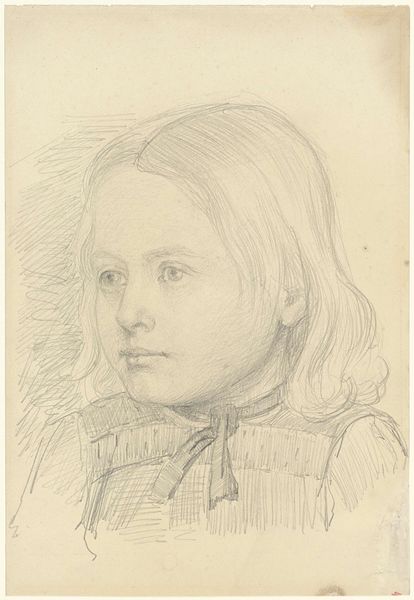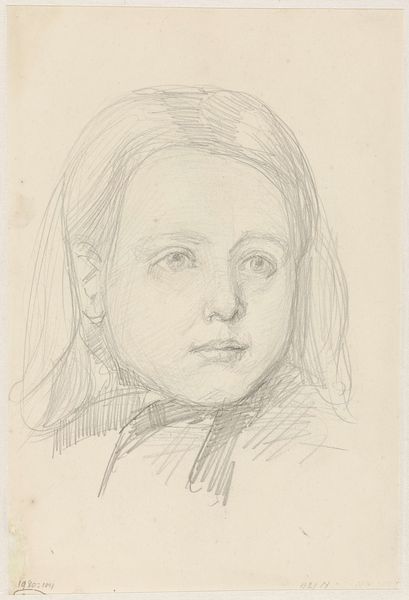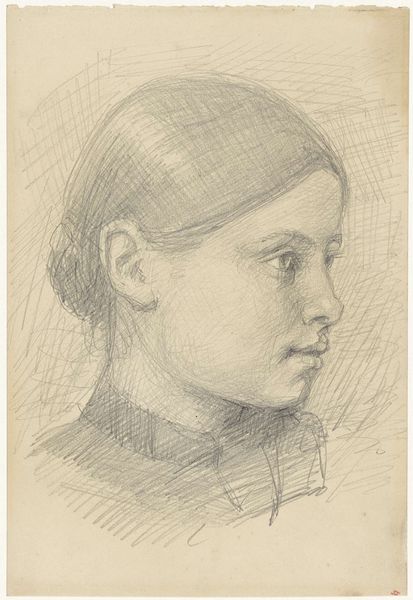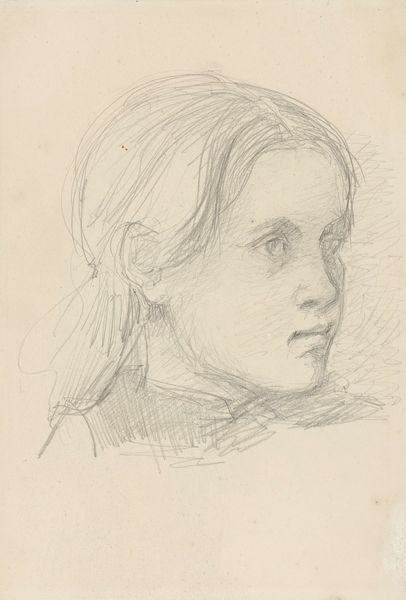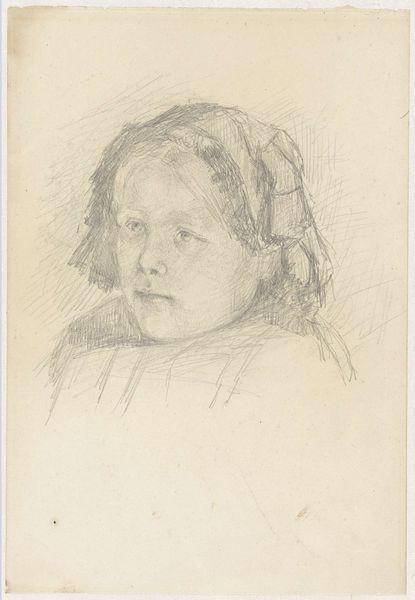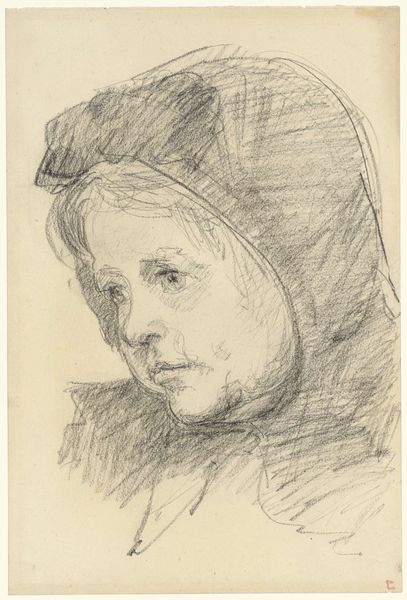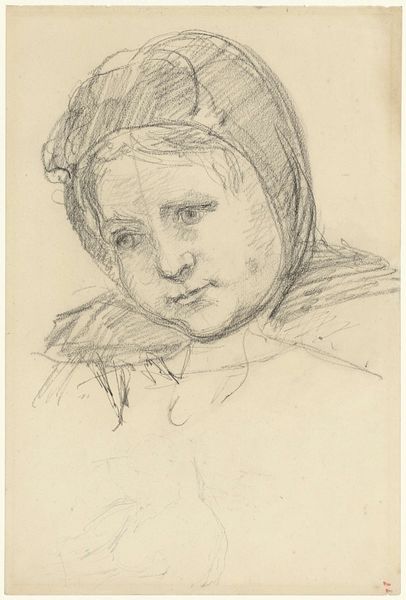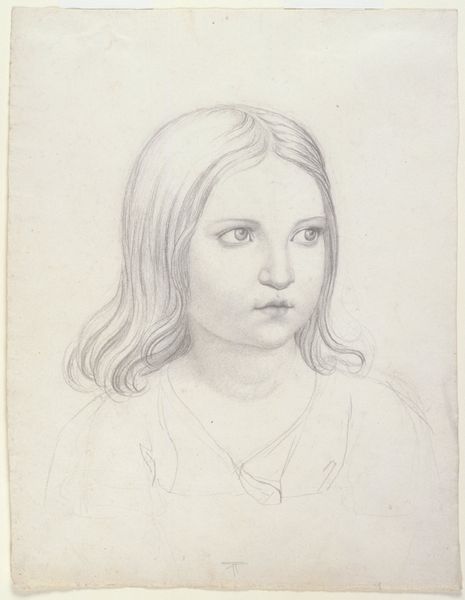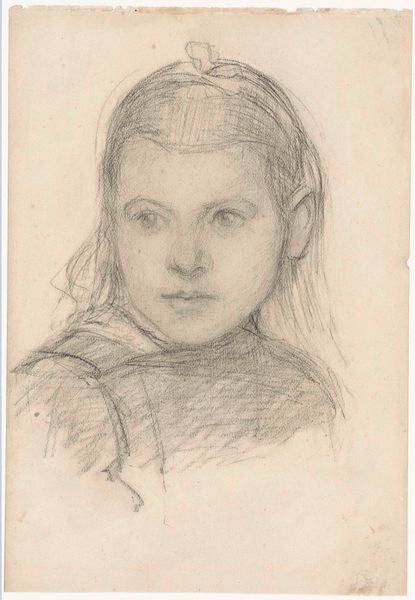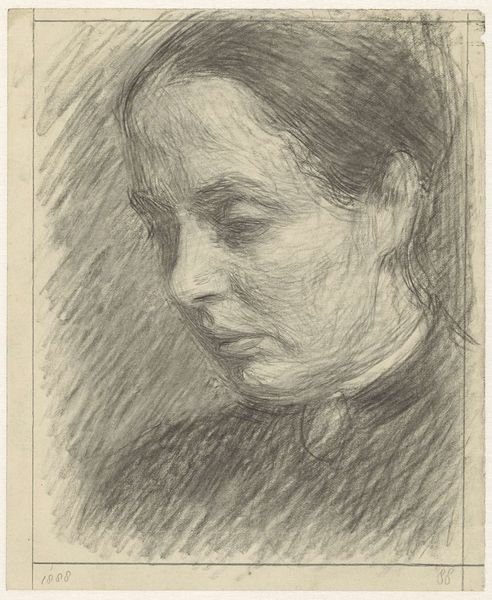
drawing, pencil
#
portrait
#
pencil drawn
#
drawing
#
pencil drawing
#
pencil
#
portrait drawing
#
realism
Dimensions: height 310 mm, width 209 mm
Copyright: Rijks Museum: Open Domain
Jozef Israëls made this drawing, "Portret van een meisje," with a graphite pencil on paper. Immediately, the delicate network of lines catches the eye. It's an intricate dance between light and shadow. Look closely at how Israëls constructs the face with these lines. They aren’t just outlines; they build volume and texture, particularly around the eyes and mouth, which gives the girl a quiet, contemplative presence. The cross-hatching in the background and clothing contrasts with the smoother, more deliberate strokes defining her face, pushing it forward. Israëls uses a semiotic language of drawing. The soft, almost hesitant lines signify not just a physical likeness but a certain psychological depth. Is it a comment on the transient nature of youth? Perhaps it speaks to the inner life of the subject, a common theme in 19th-century portraiture. Consider the incompleteness of the drawing. This open-endedness invites us, as viewers, to participate in completing the image, to project our own interpretations onto the girl’s portrait. The drawing then becomes a site for contemplating not just the subject, but also the act of seeing itself.
Comments
No comments
Be the first to comment and join the conversation on the ultimate creative platform.
